The 1996 Midwinter Regatta in Clearwater
by Gonzalo "Old Man" Diaz According to the report in the May 1996 Snipe Bulletin: There was no races the first two days as winds were 25 to 40 knots. Tuesday morning, although the forecast was still very bad (35 knots of wind), the day looked good so the RC sent the Fleet out. 20 of the 27 boats registered went out. For the first race they had 12 to 15 knots. For the second race the winds continued to build up. By the start of the 3rd. race wind had stepped up to 25 knots the reaches were a blast with the big breeze and six-foot breakers. In the second reach the wind hit 30 knots and people started to drop out. Only 10 boats made it to the finish line. Hal Gilreath finished 4th but Charlie Bustamante and John McRae dropped out of the race. Both Hal and Charlie made it alright to the Club, but John ended up in the beach with a broken mast. ...
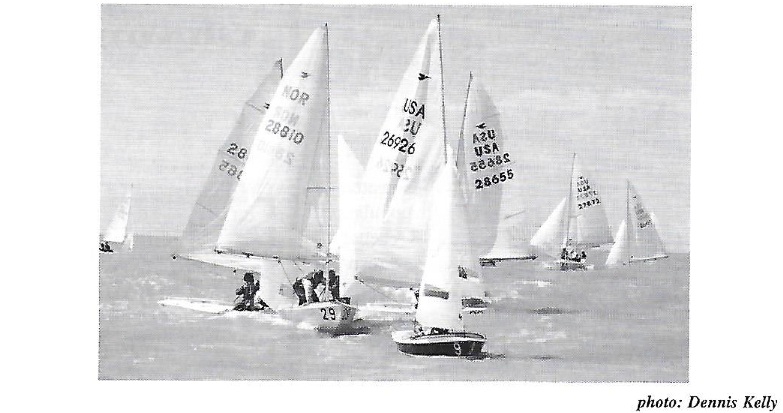

by Gonzalo “Old Man” Diaz
According to the report in the May 1996 Snipe Bulletin: There was no races the first two days as winds were 25 to 40 knots. Tuesday morning, although the forecast was still very bad (35 knots of wind), the day looked good so the RC sent the Fleet out. 20 of the 27 boats registered went out. For the first race they had 12 to 15 knots. For the second race the winds continued to build up. By the start of the 3rd. race wind had stepped up to 25 knots the reaches were a blast with the big breeze and six-foot breakers. In the second reach the wind hit 30 knots and people started to drop out. Only 10 boats made it to the finish line. Hal Gilreath finished 4th but Charlie Bustamante and John McRae dropped out of the race. Both Hal and Charlie made it alright to the Club, but John ended up in the beach with a broken mast.
…
Hal Gilreath:
Here’s what I remember.
A cold front had gone through Clearwater over the weekend. Will Glenn was crewing for me. Sunday and Monday the conditions were 30+ knots of wind and temperatures in the low 60’s. It wasn’t exactly Sunny Florida. Tuesday morning the weather appeared to have broken. It was still a bit cool but it was a very manageable 10 knots or so when we left the dock.
The breeze was out of the NW at 10-15 when we started and Olympic course. After the first triangle and second weather leg the breeze increased. I believe we went to a triangle on the second lap instead of a downwind run. It was breezy, though enjoyable. We finished the race and went back to the starting line.
The second race started and it was blowing 15+. We went up the first beat and rounded behind Dave Chapin. There may have been one or two others in there as well. What I can’t remember is whether the breeze started smoking on the first triangle and we shortened to four legs or we sailed two triangles. Nevertheless, we were going down the first reach and I remember we started to gain on the boat in front of us. At the jibe mark they rolled the boat and capsized. We rounded between their boat and the mark, and jibed. At this point the breeze really was blowing and we screamed down the second reach. We came around leeward mark and at this point the waves had built considerably. We stayed on port tack and I looked back at the leeward from about 20-25 boat lengths away. Birger rounded and it looked like his boat was picked up by a wave and then just blown over.
We sailed up the last beat w/ the jib about halfway out, the traveller down and only using the leach of the main. It was really smoking and boats were flipped all over. We went for a while and tacked to starboard. It was super windy but uneventful. Dave Chapin and Rob Lindley (or it could have been Alan Capellin crewing) won the race. We were either second or third in that race w/ Jack Franco right behind us. We finished and I saw Dave take his main down. We did the same. Will was upset having come back from a Laser training week in San Francisco and wanted to sail in w/ both sails. We pretty much planed in w/ just the jib. I was too frugal to risk blowing the rig out of the boat. We had a nice little jib only race w/ Dave heading in.
I remember seeing a gray McLauglin washed up on the rocks on the inlet in front of a hotel. Kari Warren was crewing on the boat for a nice guy named, Sean. I don’t remember his last name. We sailed in and learned of the different boats which had blown up on the beach, broke rigs and rudders or other parts. Pedro and Mimi got towed in and their mast was bent 90 degrees about 3 feet from the top. Birger ended up on the beach on Sand Key. Kari was pretty shook up. Their boat was totally lost in little pieces as the surf pounded it against the rocks.
It was an unfortunate turn of nature. Typically after a front moves through the breeze dies and doesn’t increase. The RC did a nice job w/ the races and collecting everyone. Nature will win and we all need to exercise caution in unpredictable elements. I don’t have the results to refresh my memories. Hopefully this helps and my recollection is accurate.
Old Man:
Here is Charlie’s Account of that day. Like Hal, He and Michele do not remember that they really had 3 races and they dropped out of the 3rd Race. See the attached Regatta Report and Results I heard that Birger capsized in the channel and lost the mast. The rescue was done by an old couple on a big boat and it did not work. Finally Birger and crew had to abandon the boat. The current took the hull out into the Gulf and to the beach. The boat was found next day on the beach with the centerboard buried in the sand. After a year bouncing around I bought that boat 28810 Augie and I cleaned the sand in the double botton and took it to Chattanooga where Mike McLaughlin fixed the heavily cracked bottom. An unbelievable repair!! Only Mike could have resuscitated that boat!! Augie came back to sailing with that boat and won many regattas. The boat is still sailing. Recently used at the Women’s World in New Port RI. The Old Man
Charlie Bustamante:
In the morning I noticed that the clouds overhead were moving very fast, faster than I’ve ever seen them move before a regatta. I would estimate that the clouds overhead we’re moving at 50 or 60 kn. So I was very concerned because I knew that as the day would heat up, that wind would come down and hit the water as the hot air rises and forces it down. I figured we’d see maybe 50 to 80% of that speed on the water at the surface.
So I told Michele that we really probably should not sail and that really that the races should be canceled. Michele actually went over and spoke to the regatta chairman and explained to him that we thought there’d be too much wind to have a race. And the regatta chairman said to Michele “but you will be coming in downwind” and Michele told him that’s precisely what the problem is. But he was a big boat sailor and he did not understand that. And I guess that’s the problem when you have a big boat sailor as a regatta chairman, they don’t really understand the danger.
Anyway, like fools we decide to go sailing. During the first race, as I recall, the wind was fairly nice like 10 or 12 knots, but about halfway up the weather leg The wind picked up to about 18 and that’s when I start to get concerned. I looked out over the horizon and saw something very strange. I noticed that the horizon, and as you know the golf is a virtual ocean, the horizon was dancing and I had never seen anything like that before. In other words the horizon looked as if they were big waves are the horizon but they were very unorganized and they were big. normally when you look out over the horizon no matter how hard it’s blowing the horizon looks like a straight line it never looks tumultuous. I’ve done some ocean racing and even ocean racing with big huge waves the horizon looks like a straight line. So I knew this was a problem and that we had to go in. My next challenge was convincing Michele that we should go in. As you know Michele is very competitive and we were actually doing really well in the race. I would say we were maybe in the top 20%, and we were maybe 3/4 of the way towards the weather Mark. Michele did not want to go in. I had to really stress on her how dangerous the situation could be and had to just continue to attack her with it. It actually took a few minutes to convince her. “Why did we come here? To race! Why am I doing all this hiking?” ..etc.
So we started to head in and we had to debate when to take down the main. Michele and I both remember that we sailed for a little bit just to try to get closer to the inlet before we dropping the main. I would say that as soon we were within reasonable distance from the inlet we dropped the main and by that time it was already blowing pretty hard.
By the time we were approaching the inlet I remember there were very few boats still sailing, maybe five. And Hal Gilreath and Jerry Thompson were still sailing and leading and to me it looked like they had no intention of ever dropping out. Of course I was not worried about them. Instead I was worried about other sailors.
I do remember telling you something very strange happened near the mouth of the inlet but it was not a big wave. What happened was that under jib alone we were already planning. That in itself is not a big deal what’s more of a big deal is that the wind was so strong that it was blowing droplets of water from the top of the water without there being whitecaps in other words the wind was so strong that it peeled water off the surface and the water droplets were flying horizontally and hitting our faces and our eyes. It was very strange.
We had the boat under control fairly well through the bridge so that wasn’t a problem. We don’t remember a problem. It was very scary but it wasn’t a big problem. I think we were just lucky that there were no other big boats coming through the channel into the bridge at the time we had to cross. There were no other snipes around as we were one of the first, or the first to retire.
The biggest problem we faced was after we turned the corner and started to try to go up wind under jib alone. The wind was too strong to make any headway and we were very close to the dock but we were not able to make it. We had to take salvage near the condos they had their own small dock. We were about two or three docs short of the dock we needed to get to. During the strongest winds all we could do is wait. And things got very violent, even behind the condo. So we waited it out and when the wind got light enough, like maybe 30 kn or 25, we then set sail again under duress just to make it over by a few docks.
As we waited there at that dock we were very concerned about the other sailors and nobody was around. Michele was very upset and crying. When we got to the dock at Clearwater yacht club there was A fire truck and rescue squad vehicle and that really freaked us out. We figured for sure somebody was injured.
From that point on it was a question of have we seen so and so. Everyone was trying to account for everyone else and I remember that for a long time no one had seen Don Hackbarth or Birger Jansen.
I did not have a chance to look around and see what other boats were doing. So I did not see whether not Birger Jansen tried to go in with his main or not. It was enough just to keep the boat up right under Jib alone.
You asked me how I dropped my main. At that time and even now all of my masts were rigged with the device that was made by Jim Janda. This was a quick release device where I could drop the main even with the Cunningham and vang having full tension. I just pull a pin and the main falls. Since Jim never anodized the parts and because I never anodized them either they have since frozen but they still kind of work OK as a quick Release.
Hal Gilreath:
One thing I distinctly remember is looking back at the leeward mark and seeing Birger’s boat round up around the mark, go up a wave and into the air and get blown over. He definitely flipped there. It’s likely he righted the boat and sailed into the channel and flipped again. After looking at the results I remember the first race was fairly straightforward. The breeze picked up in the second race. Then right after the start of the 3rd race it started blowing hard.
I can see Alex and Lisa in the picture and in the results, yet don’t remember sailing against them. I do remember we sailed around Scott Nixon quite a bit. Though I don’t remember him in the 3rd race. It’s interesting I didn’t even remember Henry and Carol sailing.
I do remember the Don Q was great until the last race where we gave away the regatta to Dave. I guess we’re all destined to remember the travails of sailboat racing.
Alex Pline:
A picture of John Macrae fixing the hole after he surfed up on Sand Key.
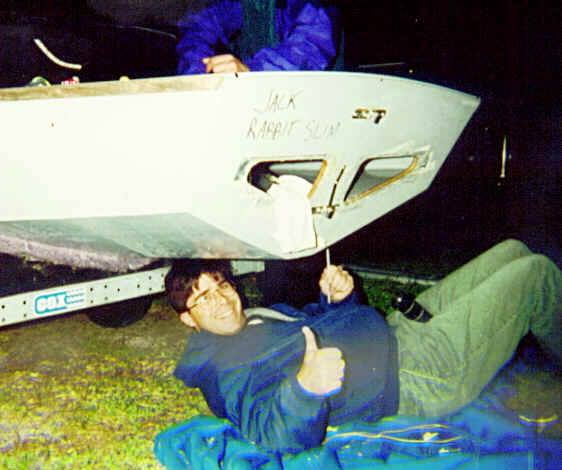
And of course let’s not forget this picture. The sail in was probably the hairiest part because the 30+ knot breeze in against the current made for crazy waves in the Sand Key cut and some did not make it through. Lisa and I were the last boat standing on the last beat and took our main down deciding it just wasn’t worth it for 11th place. The sail in with just the jib downwind was very controlled and definitely the right thing to do. Beating back up the cut to the club with just the jib was awkward, but was OK.
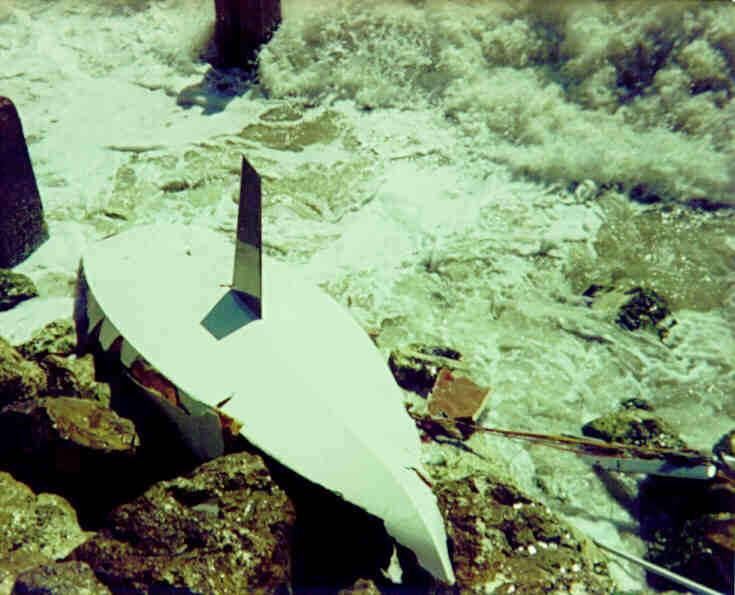
Carol Cronin:
Yup, remember it well. Henry and I finished and then dropped the main, but we still managed to invert the mast in the process. The scariest thing was limping back to the dock and realizing only a few boats had already made it in ahead of us.
Comments for this post are closed

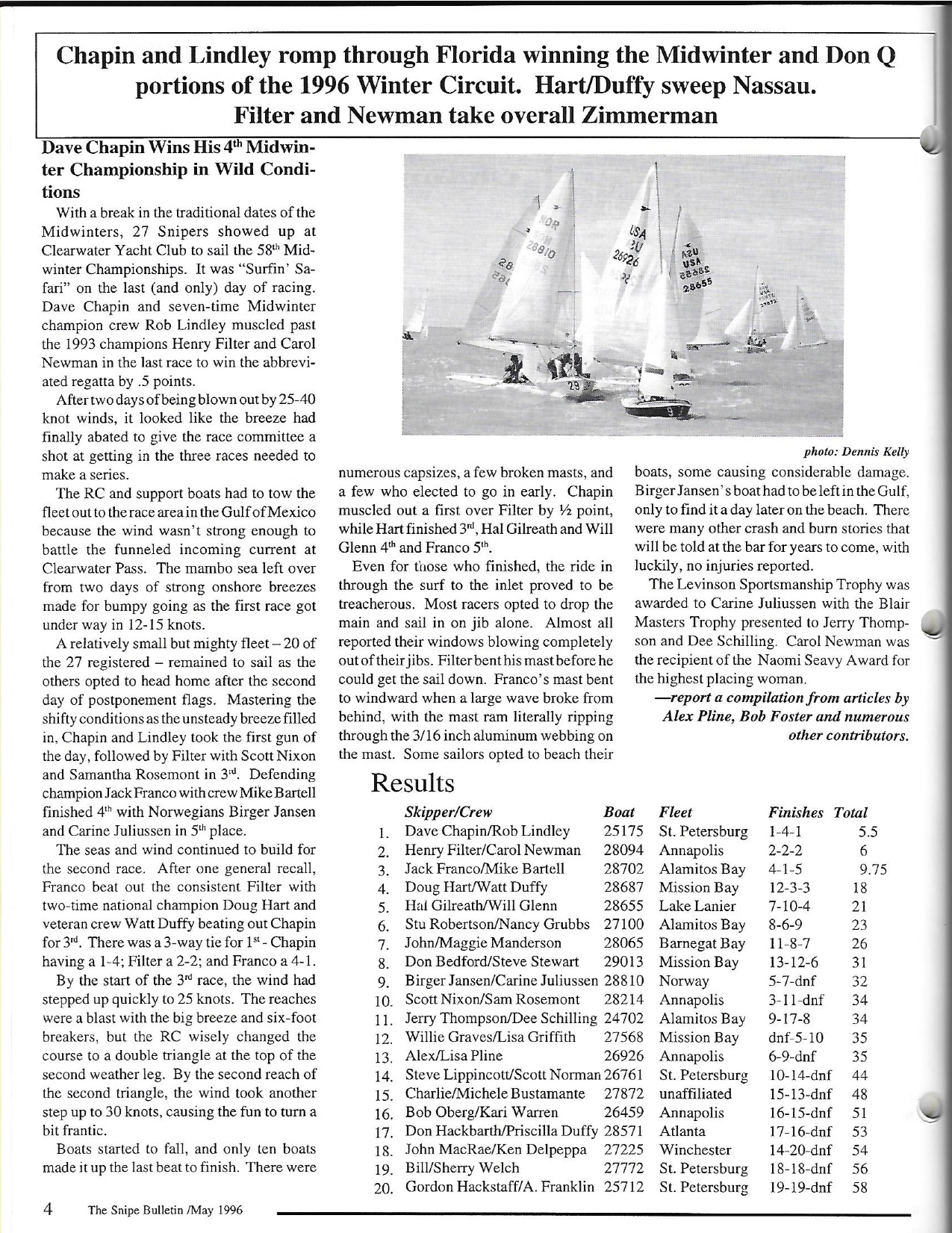
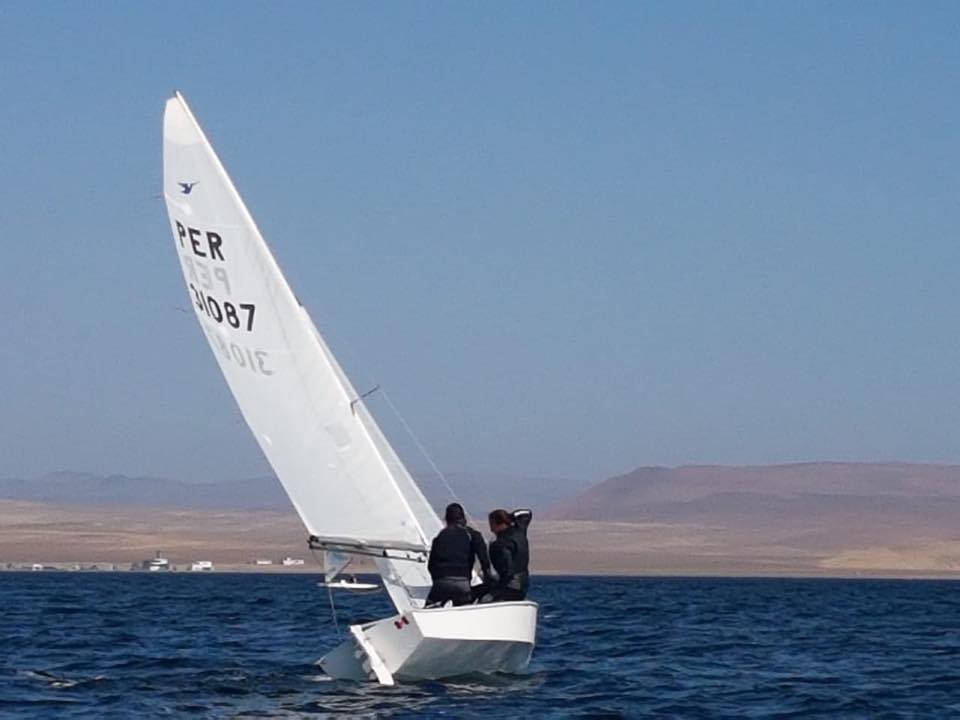
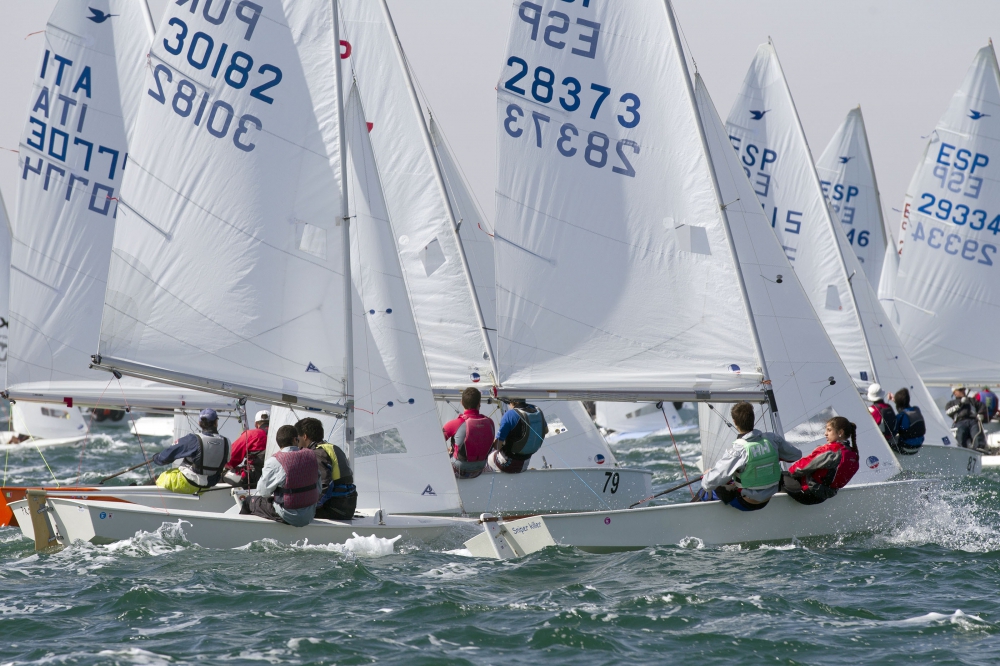

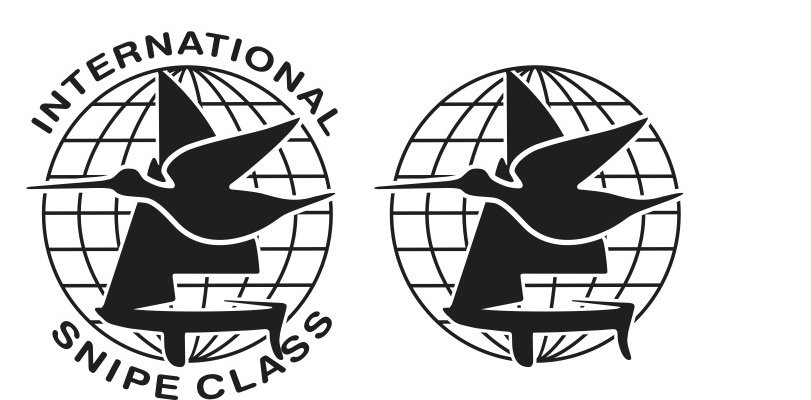
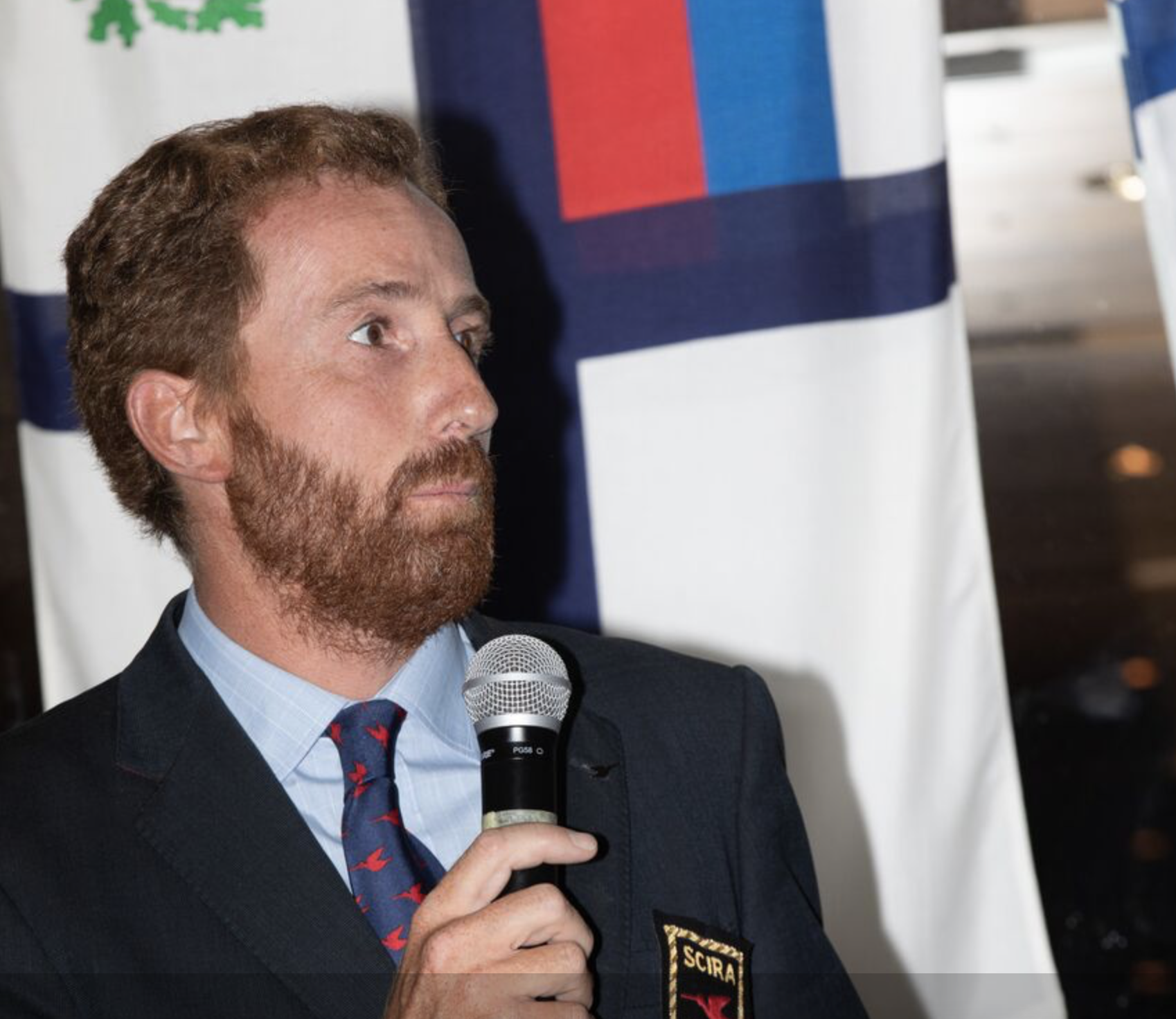
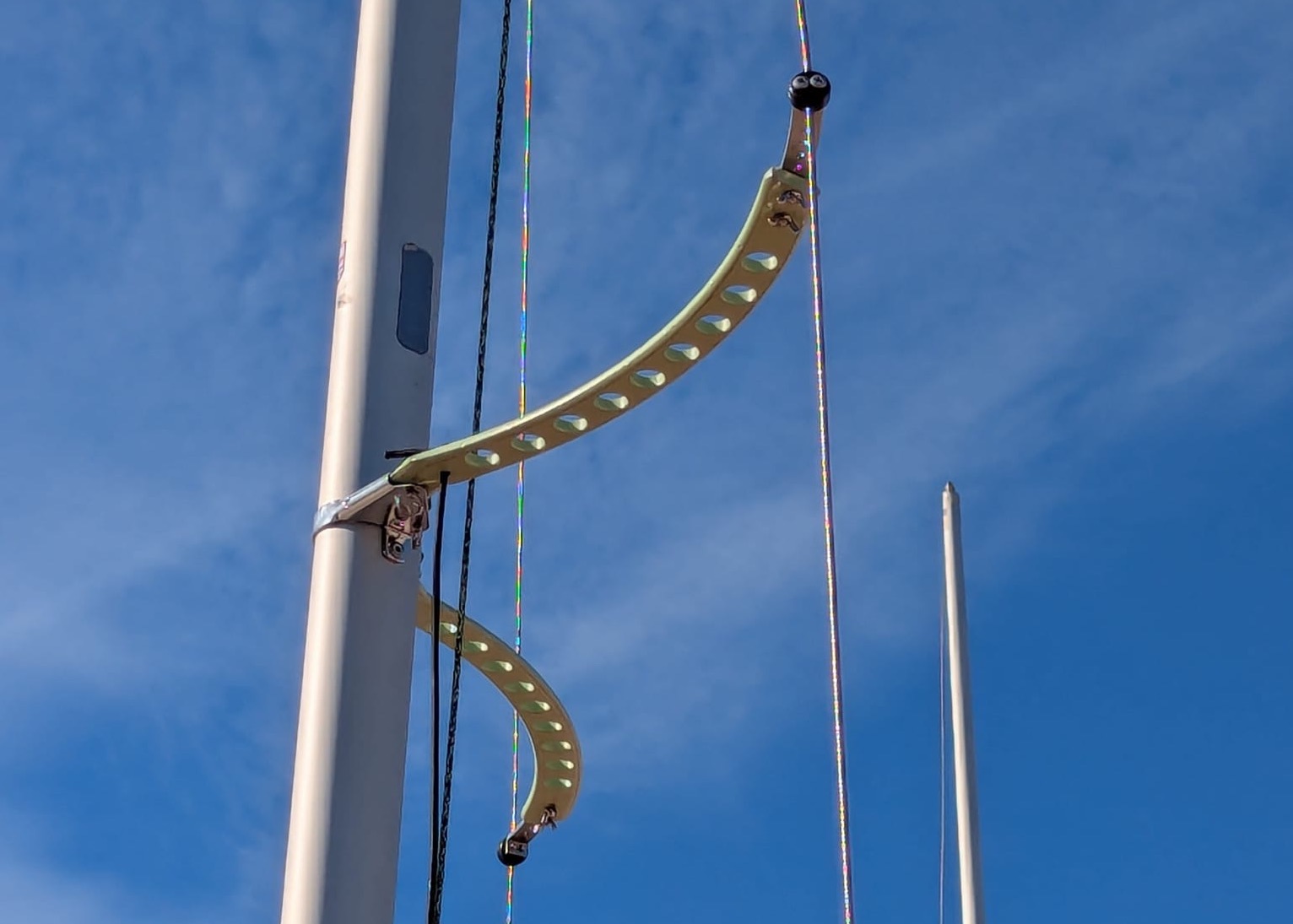
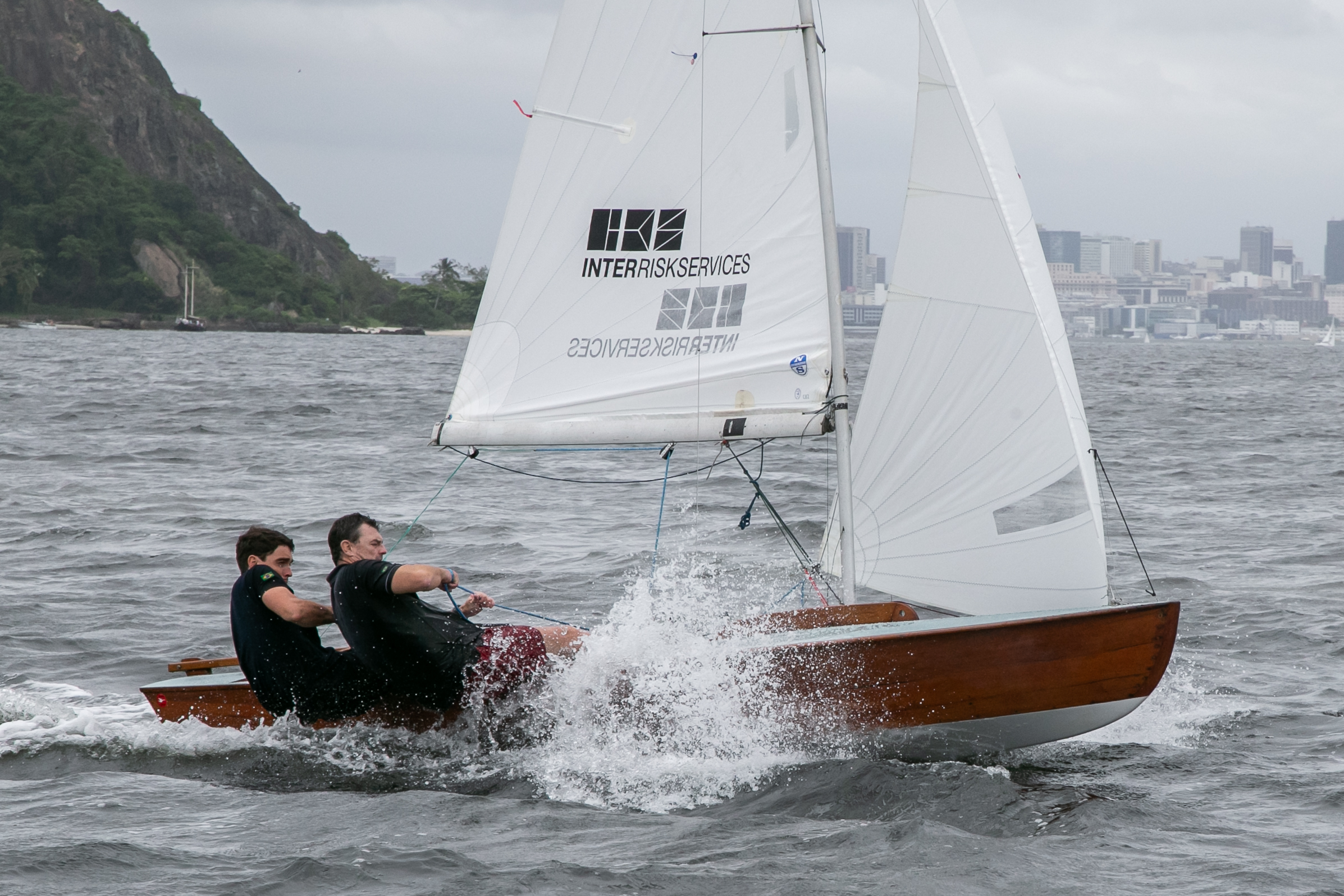
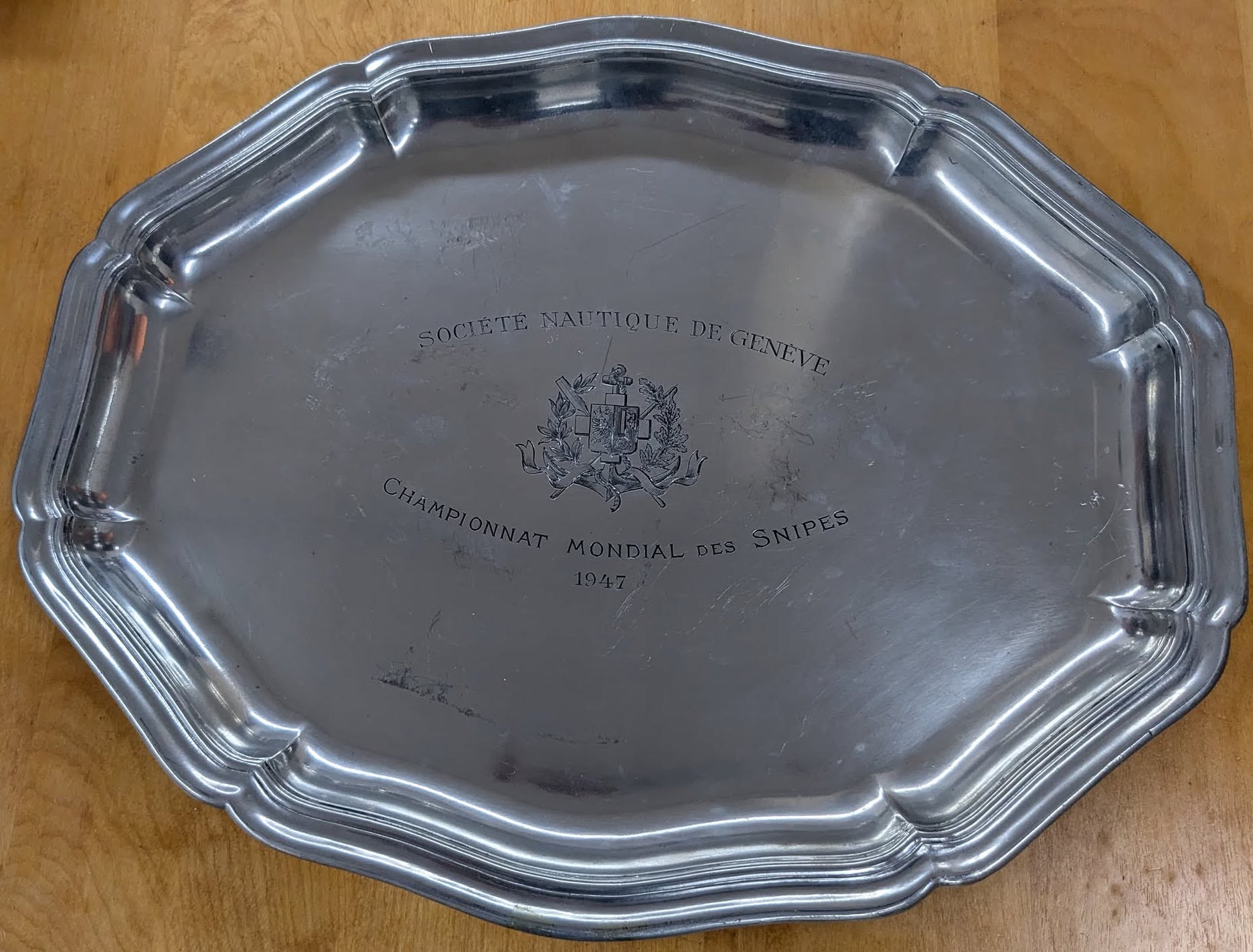
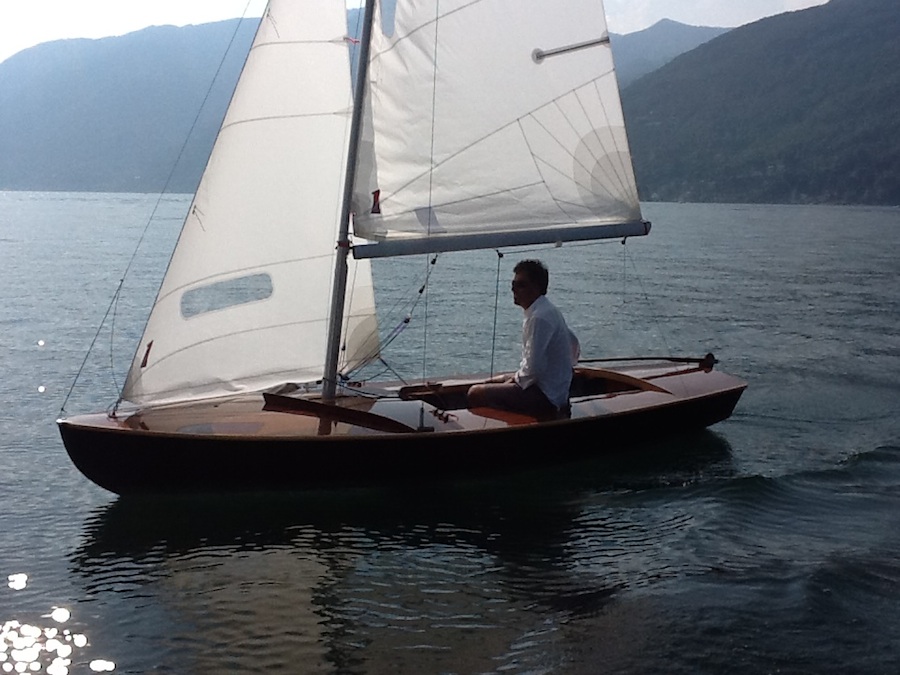
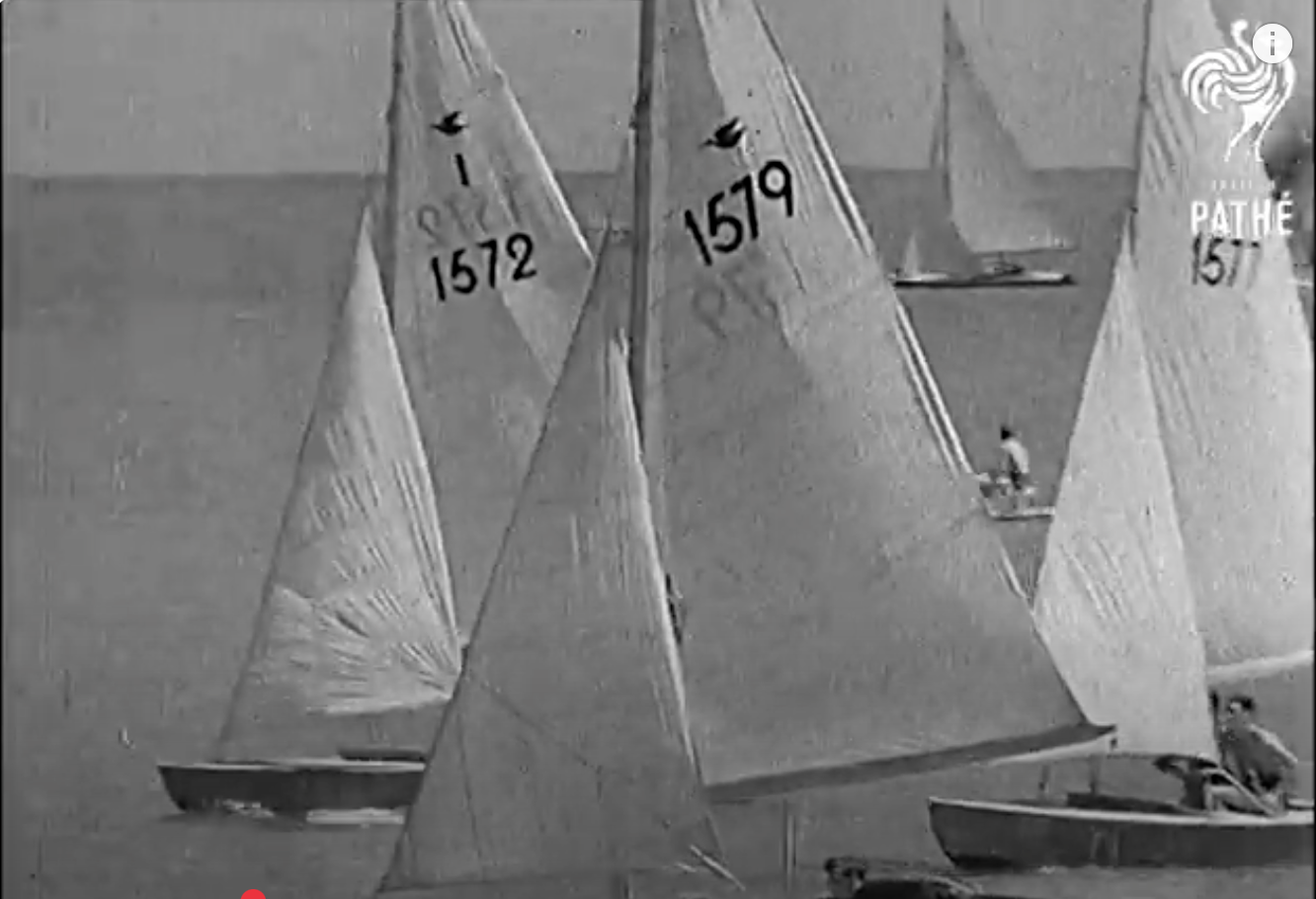
0 comments